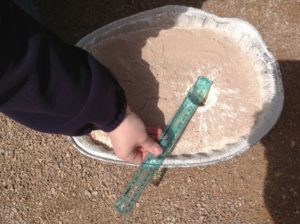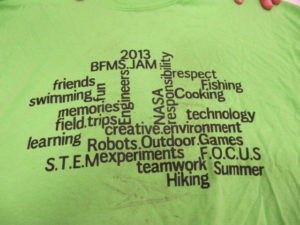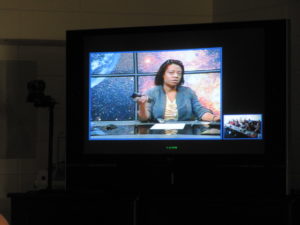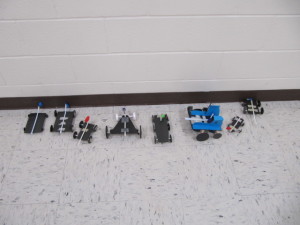Summer Class Unites Art And Science
Usually, science and art are described as complete opposites, but this week, the two were blended for a special summertime class.
For the second time, Yankton High School hosted the ARTsome Astronomy class, an all-day class that teaches educators how science can be used to create beautiful pieces of artwork.
This week, a group of students from around South Dakota and Nebraska came to Yankton to partake in the class, taught by science teacher Marie Steckelberg and art teacher DeVee Dietz, who have had this idea for years.
“This has been a dream of ours because I am an artist with a love of science, she (Steckelberg) is a science teacher with a love of art,” Dietz said. “We wanted to come together to see how science can inspire art and how art can empower science.”
Not only did they combine art and science, but the bulk of their students are educators who want to pass this knowledge to their students, said Steckelberg.
Although the main focus was on uniting art and astronomy, the classes were taught to help educators include other subjects into this method of teaching such as math and writing, she added.
The classes focused on the basics of arts and the geology behind various formations in planets.
“We start the class by asking the participants to write down what they know about space and they often find out that they don’t know as much as they thought they did,” Dietz said.
Different versions of the class were done this week. Monday and Tuesday was ARTsome Astronomy I, which taught the basics of art and space. On Wednesday and today (Thursday), the classes changed to ARTsome Astronomy II, which took the pre-established knowledge from the first session and added to it by allowing students to create sculptures.
Sturgis Williams Middle School will also host a version of ARTsome Astronomy I on June 13-14.
To promote their classes, both Dietz and Steckelberg send emails and letters to schools around the region. Doing this allowed the program to triple in size between the three separate sessions.
“Only at workshops do we actually use posters and papers to advertise our classes,” Steckelberg said.
This year’s class was made of teachers and artists from Nebraska, Scotland, Sioux Falls, Rapid City and Yankton who wanted to take this chance to learn more about this topic.
“(Tuesday), I said that there was no way I could do any of these artworks,” Laura Nedved, a religion educator for St. Benedicts in Yankton. “Today (Wednesday), I ended up with a halfway decent picture.”
The majority of teachers who attended the class were there to learn new methods to teach their students in a more active way, as opposed to reading and memorizing the information from books.
“With kids, if they can get a double dose of something like art, they can better learn how to unite different subjects in the future,” said Lori Boldt, a Sioux Falls art instructor who teaches at the Holy Spirit and St. Lamberts schools.
Some teachers had different uses for the lessons in taught.
Roxann Hunhoff, a fifth grade Beadle Elementary science teacher, has plans to use what she has learned for Earth science lessons.
“In earth science, we talk about changes in the earth’s surface, and one of those ways is through glaciers, and so I did the Pine Island Glacier to make a detailed lesson,” Hunhoff said. “When we first start talking about earth science and the changes of the earth, I will try to incorporate this into those classes.”
Not all the participants took this class to aid in their own classes.
Mary Jane Mathrole, a former Crofton teacher, said she used these classes to improve her artistic talents.
“I had no clue what I was getting into, but the art drew me and the fact that it was connected with something else was something I had never done before,” she said. “I do intend to share what I have done with my fellow artists with the connecting arts group.”
Dietz and Steckelberg have plans to grow their class, with the ultimate goal being to set up a teen version of the course and to go around to schools in the area to teach a two-week version of this course.
The growth of this class would also be accepted by more adults as well, several educators said.
“I would recommend this class for anyone interested in science and NASA and using those to create art,” Mathrole said.





